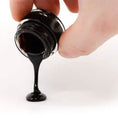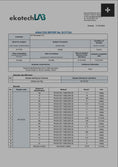This exceptional and highly coveted substance, created over time by the fusion of plant matter and minerals, is a true treasure of natural goodness. Each 30ml bottle offers pure shilajit resin, sourced from the pristine Himalayan mountains.
We have blended this with 20% filtered water so it is useable by pipette. Renowned for its exceptional profile, shilajit is packed with fulvic acid, trace minerals, and antioxidants, providing a vast array of potential benefits. Shilajit resin is the purest form of shilajit.
This product is free from fillers, preservatives and artificial ingredients. Each batch is third party tested so as to make sure it is free from heavy metal contamination, and other potential contaminants.
What is the history of Shilajit?
Shilajit's origins stretch back to ancient civilizations, over 5000 years ago. It was recognized in Ayurvedic tradition as a "rasayana" or rejuvenator, with the power to increase longevity. This belief was so ingrained in the society of the time that it was incorporated into the ancient Indian texts, the Charaka Samhita and Sushruta Samhita, both of which are foundational treatises on Ayurvedic medicine.
Simultaneously, Shilajit's fame was not limited to India alone. It was revered in the ancient Persian medicine system too, where it was known as "mumijo". Just as in India, the Persians considered it a life-enhancing substance.
As we move into the medieval period, around the 5th to the 15th century, the use of Shilajit persisted. Scholars and naturalists like Al-Biruni and Avicenna documented the substance in their work, highlighting its therapeutic value. Avicenna, a Persian polymath, in particular, lauded Shilajit's benefits in his famous book, "The Canon of Medicine".
In the modern era, scientific interest in Shilajit has surged. Numerous studies were conducted throughout the 20th and early 21st centuries, mostly aimed at verifying its traditional uses with empirical evidence. Much of this research confirmed the presence of a variety of minerals and fulvic acid, which are believed to contribute to Shilajit's purported health benefits.
Into the late 20th and early 21st century, Shilajit gained popularity as a supplement in Western markets, though its use is still grounded in the principles of Ayurvedic and holistic wellness. Despite becoming mainstream, it retains its ancient mystique, standing as a testament to the wisdom of traditional medicinal systems that recognized its value centuries before modern science.
How to identify good quality Shilajit?
In terms of appearance, genuine Shilajit should have a glossy surface and a blackish-brown color. Though color can vary somewhat depending on the specific mineral composition and source, any significant deviation (such as a light color or opaqueness) could indicate a low-quality or adulterated product.
Shilajit's consistency also provides valuable clues. Genuine Shilajit is somewhat pliable at room temperature and softens when held in hand, becoming more tar-like. It hardens when cooled and softens when warmed. If the product doesn’t exhibit these characteristics, it may be adulterated.
The smell of Shilajit is another distinguishing factor. Genuine Shilajit has a distinct, sharp, somewhat smoky odor that’s reminiscent of burnt charcoal or tar. A lack of this smell, or the presence of a sweet or artificial odor, may indicate an adulterated product.
When a small amount of Shilajit is dissolved in warm water, it should completely dissolve without leaving any residue, forming a slightly cloudy solution. If the substance doesn’t dissolve completely, or if it forms clear rather than slightly opaque water, it may be counterfeit or of poor quality.
Shilajit also has a distinct, bitter taste, which is difficult to mask. If the product tastes sweet, salty, or distinctly earthy, it may not be genuine. However, taste should be used as a secondary test, as tasting unknown substances can carry inherent risks.
What if my Shilajit is very hard?
Shilajit, in its natural resin form, is indeed a substance that changes its consistency depending on the surrounding temperature. It becomes hard and brittle in cold temperatures, while warmer temperatures make it soft and pliable. This is a natural characteristic of Shilajit and does not necessarily indicate a problem with its quality or efficacy.
So, if you find that your Shilajit resin has become very hard, it's likely because it's been stored in a cooler environment. To soften it, a simple and practical solution is to warm it up. One effective way to do this is by carrying it in your pocket for a while. Your body heat will naturally warm the Shilajit, causing it to soften and become more manageable.
Remember, when handling Shilajit, it's always important to maintain clean hands and utensils to prevent any potential contamination. Also, while warming it up, ensure that it's not exposed to excessive heat, as this could potentially alter some of its beneficial properties.







